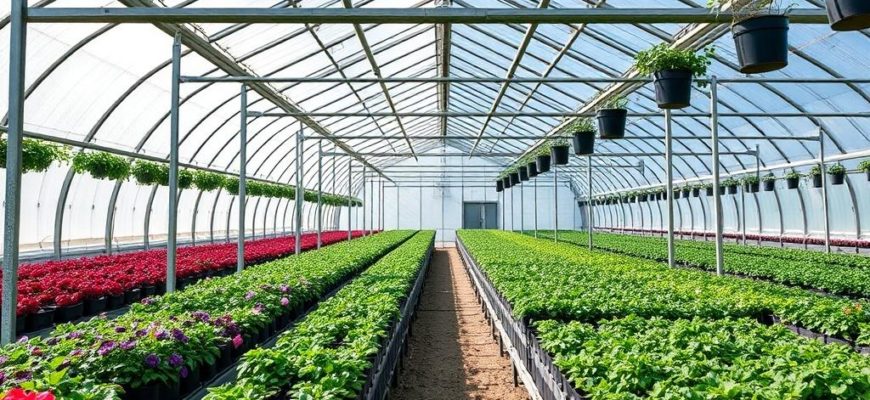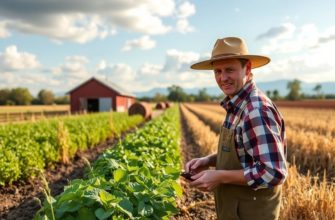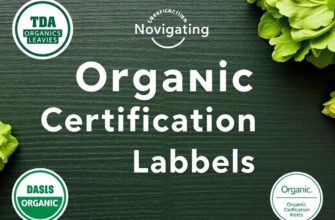Международное название:
Синонимы:
Характеристики:
| Сложность: | |
| Цикл развития: | |
| Световой режим: | |
| Режим полива: | |
| Температура: | |
| Почва: | |
| Ключевая черта: |
Цвет листвы
Цвет бутонов
Размеры цветка
Систематика:
| Домен: | |
| Царство: | |
| Отдел: | |
| Класс: | |
| Порядок: | |
| Семейство: | |
| Род: |
Growing in a greenhouse is a little like having a conversation with nature: you set the stage, listen carefully, and then respond. When that conversation is steady and thoughtful, you can coax plants into producing all year, even when the weather outside is doing its worst. This guide will walk you through greenhouse management for year-round production in a friendly, practical way — from choosing the right structure and systems to scheduling crops and troubleshooting problems. Whether you are a backyard grower with a hobby greenhouse or a commercial producer scaling up, these principles help you take control of the environment, reduce surprises, and get steady yields through winter snows, spring rains, summer heat, and fall chills.
Let’s start with the big picture: successful year-round production rests on controlling temperature, light, water, air, nutrition, and pests — and doing so reliably. You can’t engineer every gust of wind or every sunny day, but you can design systems that flatten the curve of variability. That means combining good design, efficient equipment, attentive monitoring, and smart crop planning. We’ll go step by step, blending technical ideas with practical tips and easy-to-implement actions so you can start improving your greenhouse management today.
- Planning and Design: Building the Foundation for Year-Round Success
- Choosing the right greenhouse type
- Insulation and thermal mass
- Layout and workflow
- Checklist for planning
- Climate Control: Managing Heat, Cooling, and Airflow
- Heating for winter production
- Pros and cons of common heating systems
- Cooling and ventilation for hot months
- Air circulation
- Lighting: Extending Daylength and Quality
- Understanding light needs
- Types of supplemental lighting
- Lighting strategies
- Water and Irrigation: The Heartbeat of Plant Health
- Irrigation systems
- Water quality and nutrient delivery
- Irrigation scheduling tips
- Growing Media and Soil Management
- Soilless mixes vs. soil
- Substrate chemistry and biology
- Nutrient Management and Fertility
- Feeding strategies
- Monitoring and record-keeping
- Pest and Disease Management: Prevention, Monitoring, and Action
- Prevention first
- Monitoring and scouting
- Biological and chemical controls
- Disease management
- Crop Selection and Scheduling for Year-Round Flow
- Choosing crops for your market and climate
- Succeeding with succession and overlapping crops
- Example crop calendar (simplified)
- Automation and Monitoring: Tools That Save Time and Improve Consistency
- Control systems and sensors
- Data-driven decisions
- Sustainability and Energy Efficiency
- Energy-saving practices
- Renewable energy integration
- Economic Considerations: Making Year-Round Production Viable
- Cost categories to model
- Strategies to improve profitability
- Troubleshooting Common Problems
- Problem: Sudden temperature swings
- Problem: High humidity and fungal outbreaks
- Problem: Stunted growth in winter
- Case Studies: Real-World Examples of Year-Round Production
- Small-scale rooftop greenhouse
- Medium commercial operation
- Resources and Continuing Learning
- Useful monitoring and record-keeping tools
- Practical Daily and Seasonal Routines
- Daily checklist
- Seasonal tasks
- Adapting to Unexpected Changes
- Quick response plan
- Scaling Up: From Hobby to Commercial Production
- Operational changes for scale
- Human factors
- Final thoughts before you plant
- Conclusion
Planning and Design: Building the Foundation for Year-Round Success
Good year-round production begins before the first seed is planted. Thoughtful planning and design reduce energy costs, cut labor, and create a more resilient operation.
Choosing the right greenhouse type
There are many greenhouse types: single-span hoop houses, multi-span greenhouse houses, quonset, and rigid framed structures. Each has trade-offs in initial cost, durability, and thermal performance. For year-round production, consider structures that can accept insulation, have good venting options, and are robust enough to handle snow loads and strong winds. Orientation matters too: in colder climates, orient the long side east-west to maximize winter light.
Insulation and thermal mass
Insulation reduces heating needs and stabilizes temperatures. Use double polycarbonate panels or double-layer polyethylene with an inflation system to trap heat. Add thermal mass — barrels of water, concrete floors, or stone beds — to absorb heat during the day and release it at night. Thermal mass smooths temperature swings and decreases fuel or electricity consumption.
Layout and workflow
Plan bench layouts, aisles, workstations, and irrigation runs for efficient labor and crop rotation. Consider modular benches that allow moving plants between high and low light areas, and design a staging area for seedlings. Easy access to water, electricity, and tools reduces time spent on routine tasks and improves responsiveness.
Checklist for planning
- Site orientation and wind patterns assessed
- Structure type chosen for climate and budget
- Insulation and thermal mass options included
- Benches, aisles, and workstations planned
- Utilities (water, power, drainage) mapped
Climate Control: Managing Heat, Cooling, and Airflow
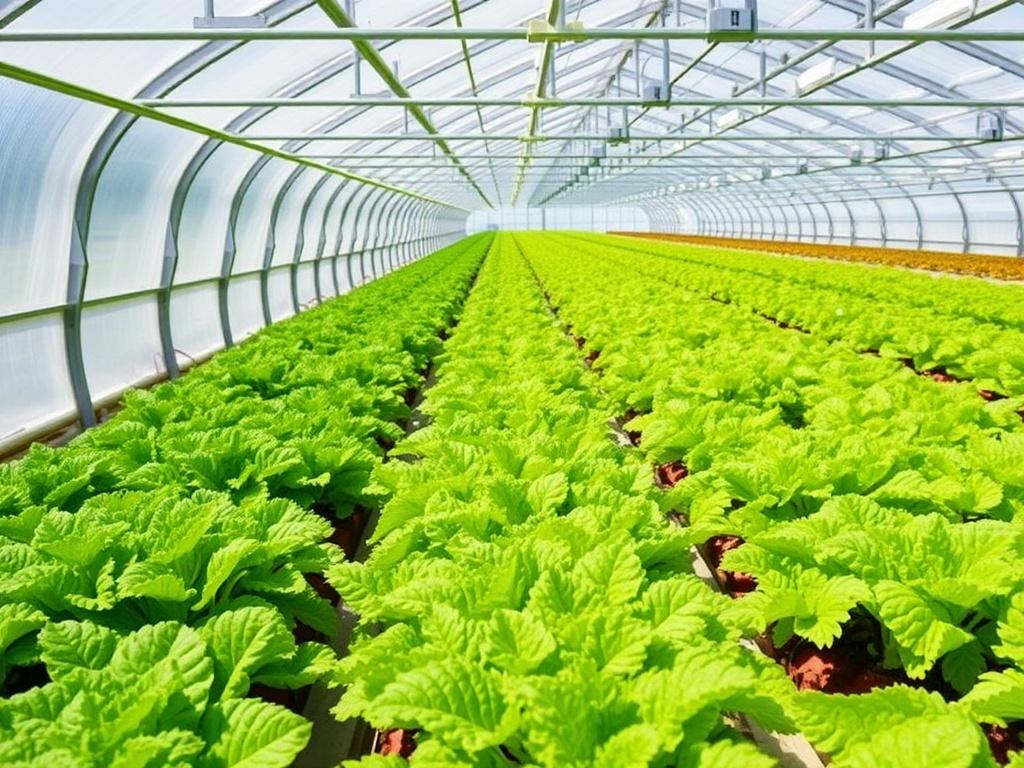
Temperature and humidity control are the core of greenhouse climate management. Plants have species-specific needs and narrow windows where they thrive; good climate control keeps conditions within those windows.
Heating for winter production
Heating is the most significant cost for year-round production in temperate and cold climates. Efficient heating strategies blend insulation, system choice, and control. Common heating options include forced-air heaters, hydronic (hot water) systems, and electric heaters. Use thermostats and zoned heating so you don’t heat empty areas. Combining heating with thermal mass reduces runtime and fuel consumption.
Pros and cons of common heating systems
| System | Pros | Cons |
|---|---|---|
| Forced-air (propane/natural gas) | High output, quick response, lower capital cost | Drying effect, potential cold spots, combustion risks |
| Hydronic (hot water) | Even heat, compatible with radiant benches, gentle on plants | Higher capital cost, slower response |
| Electric heaters | Clean, easy to control, low maintenance | High operating cost depending on electricity rates |
| Wood or biomass | Low fuel cost (where available), sustainable | Labor-intensive, variable combustion, emissions |
Cooling and ventilation for hot months
In summer, the challenge flips: keep the greenhouse cool enough to prevent heat stress and promote transpiration. Passive ventilation (roof vents and side vents), shade cloth, evaporative cooling pads, and circulating fans are common tools. Evaporative pads paired with exhaust fans create a controlled microclimate and are very effective in dry climates. Shade cloth reduces incoming solar radiation and can be adjustable so you keep as much light as plants need.
Air circulation
Even distribution of air prevents microclimates and reduces disease pressure. Overhead circulation fans help mix the air and equalize temperature gradients. Use low-speed fans to avoid heavy winds over plants but to keep the air moving. Proper air movement also dries leaf surfaces faster after irrigation, reducing fungal disease risk.
Lighting: Extending Daylength and Quality
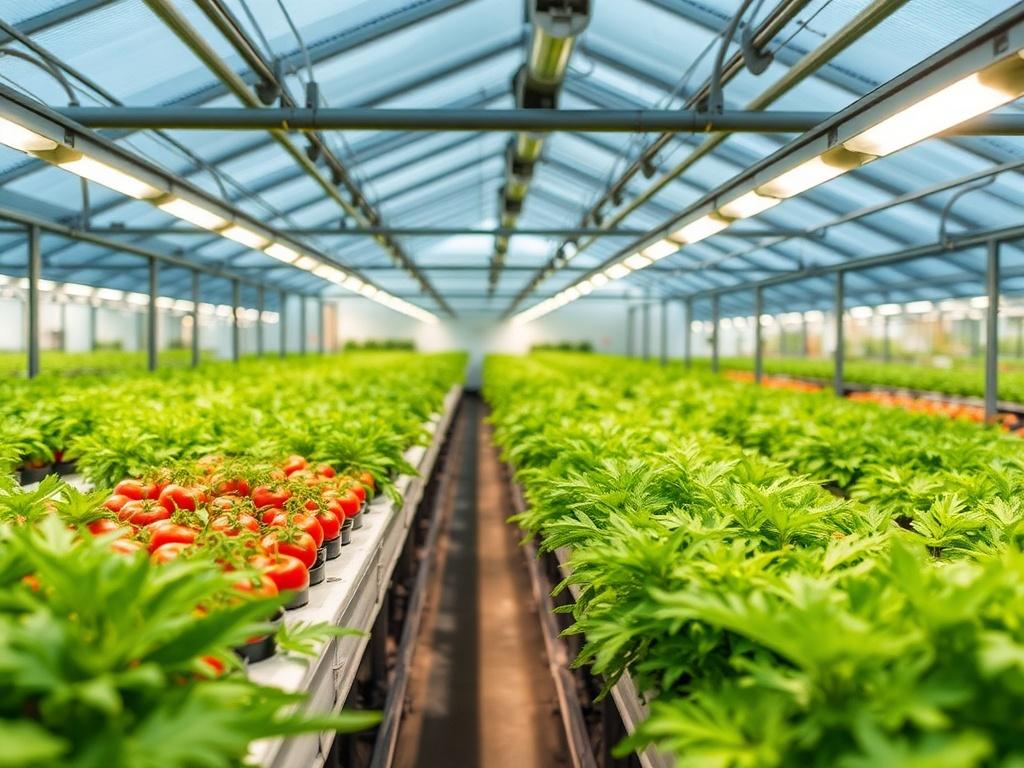
Light is a major driver of growth. Year-round production often requires supplementing natural light with artificial sources, adjusting both intensity and photoperiod.
Understanding light needs
Different crops require different light intensities (measured as PPFD — photosynthetic photon flux density) and different day lengths to flower. Leafy greens can thrive under lower PPFD and benefit from long photoperiods, while tomatoes and peppers demand high PPFD and specific day/night cycles for fruiting. In winter, natural light drops; supplemental lighting keeps photosynthesis up and prevents stretched, weak plants.
Types of supplemental lighting
LEDs are the current favorite for greenhouses due to energy efficiency, spectral flexibility, and low heat output. High-pressure sodium (HPS) lights were common but produce more heat and use more electricity. Use LEDs to match spectra to crop needs — more blue for compact growth, more red for flowering — and dimming controls to adjust intensity throughout the season.
Lighting strategies
- Photoperiod control for flowering crops — use timers to extend or shorten days
- Supplement only during low natural light periods to save energy
- Use inter-canopy lighting in tall crops to improve uniformity
- Match light intensity to crop stage: higher for fruiting, moderate for vegetative growth
Water and Irrigation: The Heartbeat of Plant Health
Water touches every aspect of greenhouse production. Overwatering invites root diseases; underwatering stresses plants and reduces yields. Automating irrigation with good scheduling is vital for consistent results.
Irrigation systems
Popular systems include drip irrigation, ebb-and-flow benches, overhead sprinklers, and hand-watering. Drip systems are efficient and reduce leaf wetting, lowering disease risk. Ebb-and-flow provides uniform moisture for containers and can be automated for nutrient delivery. Choose systems that match your crop, irrigation water quality, and labor capacity.
Water quality and nutrient delivery
Test irrigation water for pH, EC (electrical conductivity), alkalinity, and contaminants. Water with a high pH or alkalinity can cause nutrient lockout. Reverse osmosis or simple filtration systems are options for poor-quality water. When you deliver fertilizers through your irrigation (fertigation), use injection pumps and monitor EC and pH in the root zone to avoid imbalances.
Irrigation scheduling tips
- Base irrigation on crop needs and substrate moisture, not a fixed calendar.
- Use moisture sensors or weight-based measurements to time waterings.
- Water more often with smaller volumes for shallow-rooted crops like lettuce.
- Allow slight drying between irrigations to promote healthy roots, depending on crop tolerance.
Growing Media and Soil Management
Choosing the right substrate and maintaining its structure are important for root health and consistent production.
Soilless mixes vs. soil
Most greenhouse producers use soilless mixes (peat, coir, perlite, vermiculite) for predictable drainage and aeration. Soilless media reduce soil-borne pathogens and allow better control over nutrients. If using native soil, solarization and pasteurization can reduce pathogen loads, but managing drainage and structure is harder.
Substrate chemistry and biology
Keep track of media pH and nutrient holding capacity (CEC). Amend with lime or sulfur to adjust pH slowly as needed. Beneficial microbes and mycorrhizae can enhance nutrient uptake and resilience; consider inoculants where appropriate. Avoid compaction by refreshing or replacing media in containers yearly or using top-dressing strategies.
Nutrient Management and Fertility
Year-round production demands a flexible fertilization program that matches growth stages and reduces waste.
Feeding strategies
Use soluble fertilizers designed for hydroponic or greenhouse use and inject them into your irrigation system. Monitor EC and pH in the root zone; target ranges vary by crop. Adjust concentrations for seedlings, vegetative growth, and flowering. Flush media occasionally if salts build up, and correct deficiencies promptly when identified.
Monitoring and record-keeping
Keep logs of nutrient concentrations, pH, crop responses, and any amendments. Trending this data helps you spot slow-developing problems and fine-tune recipes for peak performance. Small changes in EC or pH can have outsized effects over time.
Pest and Disease Management: Prevention, Monitoring, and Action
Pest outbreaks and disease can wipe out a crop quickly in the controlled environment of a greenhouse if left unchecked. Integrated pest management (IPM) is the most practical path.
Prevention first
Sanitation is the backbone of prevention. Keep the greenhouse clean: remove plant debris, sanitize tools, and control entry points for pests. Quarantine new plants, inspect regularly, and use screens on vents to reduce insect entry.
Monitoring and scouting
Set up a routine scouting schedule. Sticky traps, scout logs, and regular checks of under-leaf and canopy surfaces allow early detection when populations are easiest to manage. Record pest levels and response thresholds to guide action.
Biological and chemical controls
Biological controls — predatory mites, parasitic wasps, beneficial nematodes — can keep pest populations in check with low environmental impact. Chemical pesticides are sometimes necessary, but rotate modes of action to prevent resistance and always follow label guidelines for greenhouse use. Combine biologicals and chemicals carefully to avoid harming beneficials.
Disease management
Fungal diseases thrive in moist, stagnant air. Control humidity, improve airflow, avoid overhead irrigation at night, and remove infected tissue promptly. Use proven fungicides when required, and aim for cultural strategies to reduce reliance on chemicals.
Crop Selection and Scheduling for Year-Round Flow
Successful year-round production is more than climate control — it’s about smart crop selection and planning so you always have something to sell or harvest.
Choosing crops for your market and climate
Select crops that match your light, temperature, and space. Leafy greens, herbs, and microgreens are forgiving and perfect for winter production because they need moderate light. Fruiting crops like tomatoes and peppers need high light and more heat, so they require stronger systems. Think through demand cycles and stagger plantings to smooth harvests.
Succeeding with succession and overlapping crops
Succession planting keeps the supply steady. Overlap plantings by staggering sowing dates so new crops reach harvest as others fade. Use a crop calendar and color-code risk levels (e.g., high-risk crops requiring intense care in winter vs. low-risk winter greens).
Example crop calendar (simplified)
| Month | Primary crops | Notes |
|---|---|---|
| January–March | Lettuces, herbs, microgreens | Use LEDs to supplement low daylight |
| April–June | Early tomatoes, cucumbers, baby greens | Ventilation increases as daytime temps rise |
| July–September | Heat-tolerant varieties, succession salads | Use shade cloth and evaporative cooling |
| October–December | Root crops, brassicas, overwintered greens | Focus on insulation and winter heating |
Automation and Monitoring: Tools That Save Time and Improve Consistency
Automation reduces human error and ensures repeatability. It also allows you to respond quickly to environmental changes.
Control systems and sensors
Modern greenhouses use integrated controllers to manage temperature, humidity, irrigation, and lighting. Sensors for temperature, humidity, soil moisture, CO2, and light intensity feed data into controllers and alarms. Start simple if necessary: automate the most critical systems first (heating and irrigation), then layer on lighting and CO2 control.
Data-driven decisions
Collect data consistently and review it daily or weekly. Trend lines help you see gradual drift in sensor calibration, nutrient recipes, or climate performance. Consider cloud-based software for remote monitoring and alerts so you can react before small problems become big ones.
Sustainability and Energy Efficiency
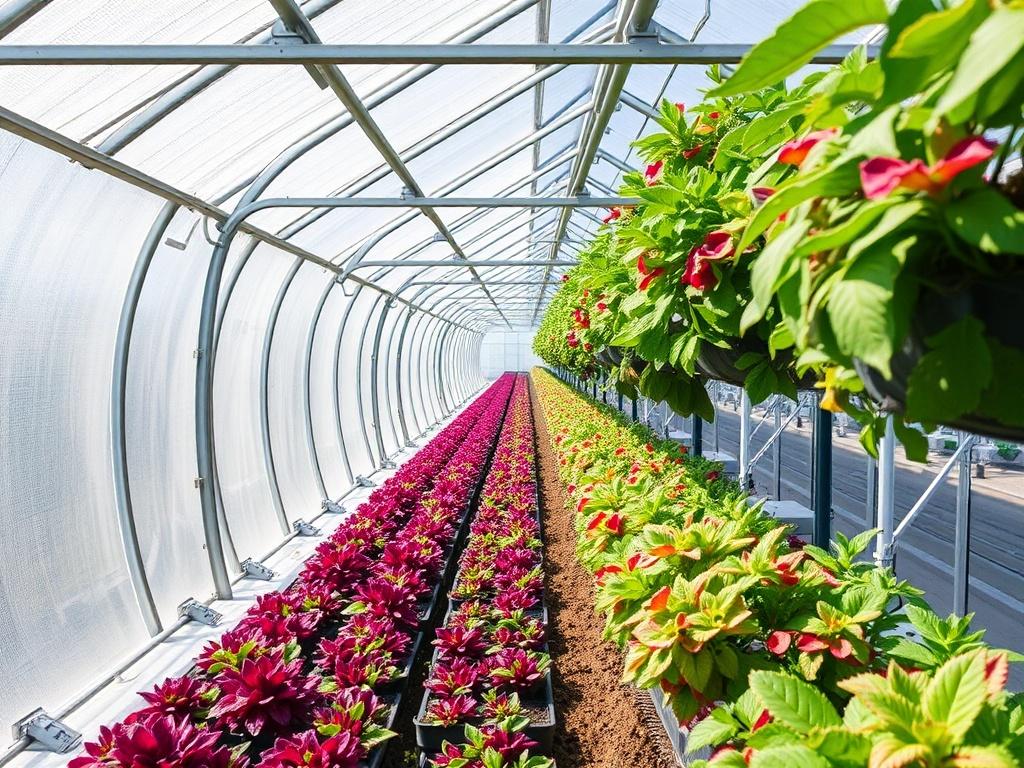
Year-round production can compete with seasonal outdoor agriculture if you focus on efficiency and sustainability.
Energy-saving practices
- Double-layer coverings with air-inflation reduce heat loss
- Use thermal curtains at night to preserve heat
- Insulate foundations and north walls to reduce cold spots
- Harvest rainwater and use low-energy pumps where possible
- Recover heat from exhaust systems when feasible
Renewable energy integration
Solar panels, biomass boilers, and geothermal heat pumps can reduce fossil fuel dependence. Pair renewables with storage (thermal mass, batteries) to match intermittent generation with greenhouse demand.
Economic Considerations: Making Year-Round Production Viable
Growing all year requires investment and operating costs. A realistic business plan helps you balance yield, price, and expenses.
Cost categories to model
Consider capital costs (structure, heating, lighting), operating costs (fuel, electricity, labor), and supply costs (fertilizers, seeds, media). Also account for product pricing variation across seasons — winter-grown produce often commands a premium.
Strategies to improve profitability
- Diversify crops across price points and labor needs
- Sell value-added products (potted herbs, salad mixes)
- Use direct marketing (farmers markets, CSAs, restaurants)
- Increase automation to reduce labor per unit
- Track labor and inputs carefully to find efficiencies
Troubleshooting Common Problems
Even seasoned growers face setbacks. Here’s how to approach typical issues.
Problem: Sudden temperature swings
Check thermostats, heater operation, and ventilation schedules. Are vents opening too early? Is a circulation fan failed? Look for drafts and insulation gaps and confirm the control logic isn’t conflicting (e.g., heaters and fans running at the same time).
Problem: High humidity and fungal outbreaks
Improve airflow, reduce leaf wetting, and adjust irrigation timing. Increase ventilation during the day and use fans to reduce stagnant pockets. Remove infected plants promptly and consider antifungal treatments if cultural controls aren’t enough.
Problem: Stunted growth in winter
Low light is a common culprit. Check supplemental lighting hours and intensity and ensure reflective surfaces and clean coverings to maximize natural light. Also confirm nutrient concentrations and root-zone temperatures are in range.
Case Studies: Real-World Examples of Year-Round Production
Practical examples illustrate how the pieces fit together.
Small-scale rooftop greenhouse
A community greenhouse on a rooftop combined double-wall polycarbonate, LED supplemental lighting, and a small heat pump. They ran leafy greens and herbs year-round, using shade curtains in summer. Automation for irrigation and HVAC reduced labor to a few hours a week, and local restaurant contracts paid a winter premium.
Medium commercial operation
A mixed vegetable greenhouse used hydronic heating with thermal storage tanks and a RO water system for consistent fertigation. They staggered plantings to supply a distribution co-op year-round. Investments in integrated pest management and beneficial insects cut pesticide costs and kept quality high, sustaining customer relationships and market price.
Resources and Continuing Learning
Greenhouse science evolves, and successful growers keep learning. Useful resources include extension services, industry associations, supplier technical sheets, and online forums. Attend field days, workshops, and webinars to stay current with new lighting and control technology. Build relationships with other growers — peer-to-peer learning is invaluable.
Useful monitoring and record-keeping tools
| Tool | Use |
|---|---|
| Data logger with Temp/Humidity sensors | Track microclimate trends over time |
| Soil/substrate moisture probes | Optimize irrigation timing and volume |
| EC and pH meter | Monitor nutrient delivery systems |
| Integrated greenhouse controllers | Automate HVAC, irrigation, and lighting |
Practical Daily and Seasonal Routines
Consistent routines keep operations predictable and prevent emergent crises.
Daily checklist
- Walk the greenhouse and visually inspect plants
- Check thermostats, heater/fan status, and alarms
- Review irrigation events and soil moisture
- Scan for pests on sticky traps and under leaves
- Log any deviations from the norm
Seasonal tasks
- Pre-winter: service heaters, check fuel supplies, install thermal curtains
- Spring: clean coverings for maximum light, calibrate irrigation and nutrient systems
- Summer: maintain cooling systems, check shade cloth, monitor humidity carefully
- Fall: plan fall/winter crop succession and prepare for potential cold snaps
Adapting to Unexpected Changes
Flexibility is a greenhouse grower’s superpower. Weather extremes, supply chain issues, or sudden shifts in market demand require quick adaptation. Maintain contingency plans: backup heating sources, spare parts for pumps and fans, and an alternative market outlet. Communication with customers during times of shortage can preserve goodwill and allow you to prioritize high-value crops.
Quick response plan
- Identify critical systems and spare parts
- Create emergency contact lists for suppliers and technicians
- Keep a prioritized crop list for resource allocation
- Document and rehearse emergency procedures
Scaling Up: From Hobby to Commercial Production
Taking greenhouse production from small to large involves systematizing everything you already do well.
Operational changes for scale
Standardize recipes (nutrients, irrigation schedules, pest thresholds), invest in labor-saving automation, and strengthen supply chains. Build a financial model that accounts for expanded capital debt and operating risk. Consider certifications (organic, GAP) that add market value but require documented practices.
Human factors
Train staff in routines, scouting, sanitation, and systems. Clear SOPs (standard operating procedures) and cross-training reduce vulnerability when team members are absent. Encourage feedback loops where staff can suggest improvements — frontline observations are often the best source of incremental gains.
Final thoughts before you plant
Year-round greenhouse production is a balance between engineering and horticulture. You won’t eliminate all risk, but with deliberate planning, reliable systems, and the willingness to monitor and adjust, you can create consistent, high-quality harvests all twelve months of the year. Start with the small changes that pay off quickly — better insulation, a water test, or a handful of LED fixtures — and build from there. With each season you’ll learn more about your site and crops, and your greenhouse will become a predictable source of abundance.
Conclusion
Successfully managing a greenhouse for year-round production is an achievable mix of good design, thoughtful systems, steady monitoring, and flexible planning; by focusing on climate control, light, water, nutrients, integrated pest management, and data-driven decision-making — and by layering in efficiency and automation where it pays off — growers can smooth out seasonal variability, reduce risks, and enjoy consistent, high-quality yields throughout the year.
Оценивайте статью, делитесь материалом с друзьями в социальных сетях, а также высказывайте свое мнение в обсуждении ниже! ![]()
